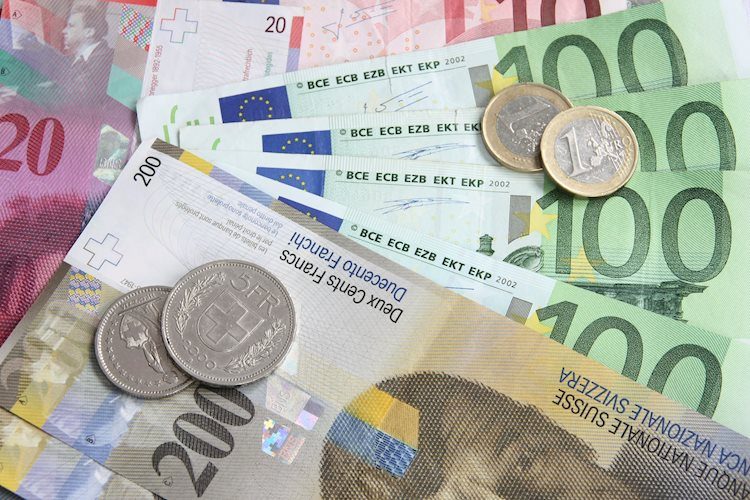The real exchange rate of the Swiss franc (against Switzerland’s trading partners, REER) has been relatively stable compared to the nominal exchange rate (NEER) in recent years, according to Commerzbank’s Head of FX and commodity research Ulrich Leuchtmann. This aligns with economic theory, as exchange rates are expected to balance out differences in domestic price developments. While the NEER may fluctuate due to changes in purchasing power, the REER remains steady. In the case of the Swiss franc, the relative stability of the REER highlights how exchange rates can adjust to maintain equilibrium despite external economic factors.
Leuchtmann notes that some observers may question the concept of nominal and real exchange rates when faced with such stability. Economists are often on the defensive in these situations, as it is challenging to experiment with entire economies to test economic theories. However, the inflation differential between Switzerland and the rest of the world in recent years has provided a natural experiment that supports the economic idea of exchange rate dynamics. Switzerland’s resilience to global inflation shocks has been a major factor in the stable exchange rate development of the Swiss franc, highlighting how external economic factors can influence exchange rate movements.
The consistent inflation rate in Switzerland relative to the rest of the world has had a significant impact on the exchange rate of the Swiss franc. This unique situation has allowed economists to observe the effects of external economic factors on exchange rates in a controlled environment. The stability of the REER compared to the NEER reinforces the idea that exchange rates can adjust to maintain equilibrium in response to changes in purchasing power and inflation differentials. This real-world experiment has provided valuable insights into the dynamics of exchange rates and how they can be influenced by economic factors.
The stability of the Swiss franc’s real exchange rate in recent years serves as a testament to the resilience of the Swiss economy to global economic shocks. While other countries have experienced fluctuations in their exchange rates due to inflation differentials, Switzerland has remained relatively unaffected. This stability has allowed economists to observe the impact of external economic factors on exchange rates in a controlled environment, confirming the economic theory of exchange rate dynamics. The relative stability of the REER compared to the NEER highlights how exchange rates can adjust to maintain equilibrium in response to external economic factors.
Despite the stability of the Swiss franc’s real exchange rate, economists continue to study the impact of external economic factors on exchange rates. The unique situation in Switzerland, where inflation differentials have remained relatively constant compared to the rest of the world, has provided valuable insights into the dynamics of exchange rates. This natural experiment has confirmed the economic idea that exchange rates can adjust to maintain equilibrium in response to changes in purchasing power and inflation rates. The stability of the REER in the face of global economic shocks highlights the resilience of the Swiss economy and its ability to maintain a steady exchange rate despite external economic pressures.
In conclusion, the stability of the Swiss franc’s real exchange rate in recent years underscores the importance of external economic factors in influencing exchange rates. The relative stability of the REER compared to the NEER highlights how exchange rates can adjust to maintain equilibrium in response to changes in inflation differentials and purchasing power. The unique situation in Switzerland, where inflation rates have remained relatively constant compared to the rest of the world, has provided valuable insights into the dynamics of exchange rates and how they can be influenced by external economic factors. This real-world experiment has confirmed the economic theory of exchange rate dynamics and the resilience of the Swiss economy to global economic shocks.











